In case you missed the last post, fermented foods are awesome for you and believe it or not, these 10 fermented foods for gut health are surprisingly tasty too.

While you can find most of these fermented foods and beverages at your local natural foods markets, you can just as easily save money by making many of them at home. Not only is it easy, it’s also fun and you get the satisfaction of savoring your own homemade creations!
To learn about the benefits of fermented foods, what they mean for your health, how and why to make them at home see my last post here. Alright then, let’s get to it!
1. Cultured Veggies (Sauerkraut, Pickles, Kimchi, Etc.)
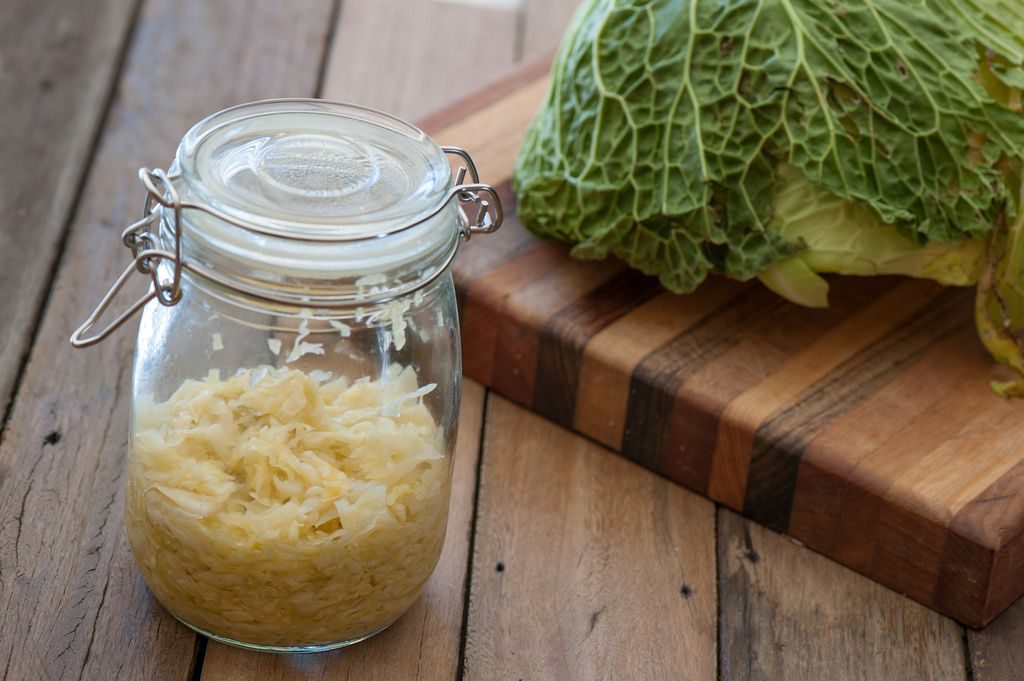
Confession: pickled veggies used to gross me out. Until I figured out why. The only kinds I had tried were pasteurized, salt, sugar, vinegar, preservative versions. I’d never tried a true live fermented veggie, but once I did, my whole relationship with these foods changed. So if you’ve had the same initial experience don’t worry, experiencing real live fermented foods is a total game changer. They truly are very tasty and they make you feel great!
Raw vegetables left to ferment at room temperature for up to a week become cultured veggies that can then be stored in the refrigerator for up to 6 months. These ferments become rich in probiotics which supply your gut with healthy bacteria and support digestion, elimination, nutrient absorption, and immune system function. These foods also contain vitamins and minerals in a raw food state that when combined with the probiotics become highly absorbable.
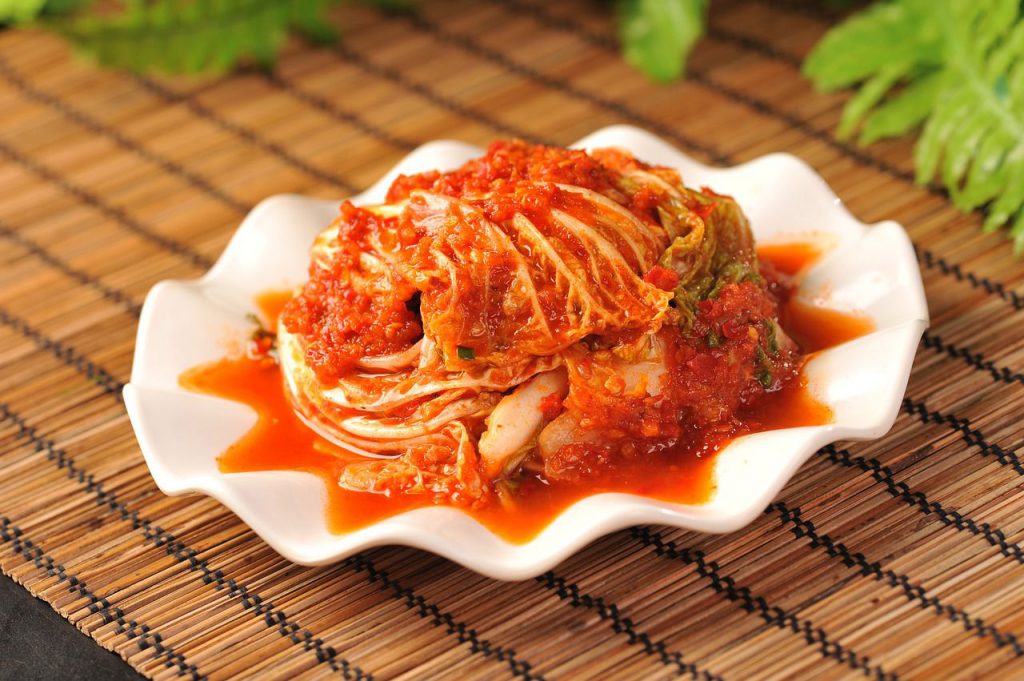
All you need to make a delicious sauerkraut is a head of cabbage, shredded, and sea salt or himalayan salt. Sauerkraut and pickles are some of the easiest fermented foods you can make at home. Kimchi is another popular spicy ferment made with cabbage and other veggies. Other tasty cultured veggies are carrots, asparagus, beets, zucchini, cauliflower, and any other veg you like. Adding things like garlic, ginger, and turmeric boosts flavor and anti-inflammatory benefits.
This fermented sauerkraut recipe is an easy way to get started!
There are a few yummy live fermented veggies you can find at grocery stores like Bubbies, Wild Brine, and Farmhouse Culture. Bubbies is pretty easy to find, the latter two may be a bit more difficult but I have found them at local natural foods markets.
2. Kombucha
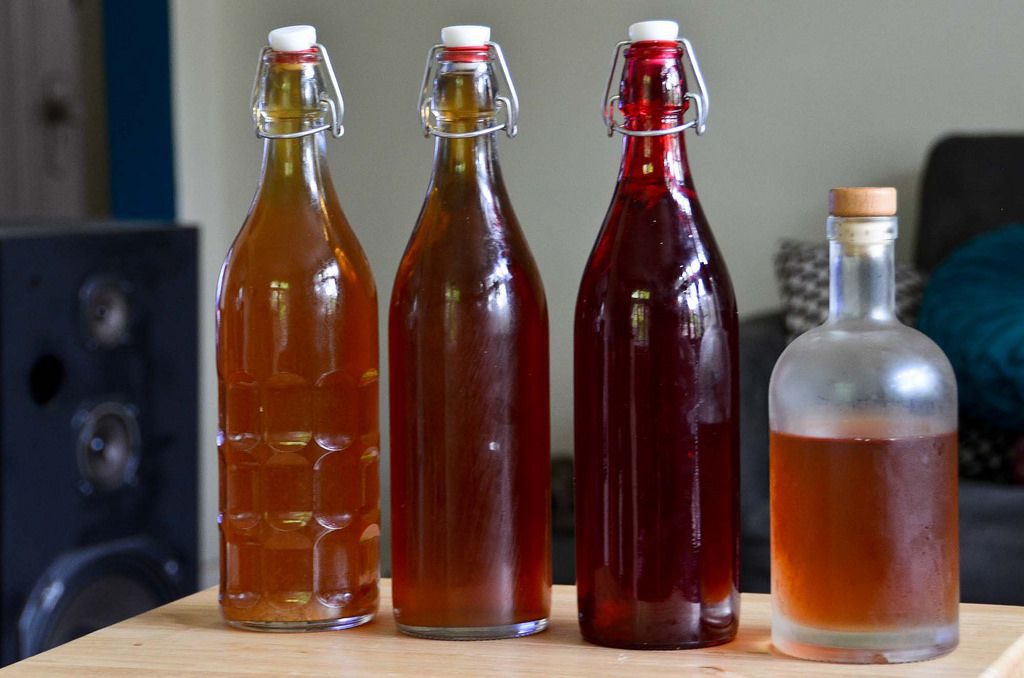
Kombucha has become quite the popular beverage these days. I’ll never forget the first time I tried this tangy effervescent drink! It took a few tries with different flavors for it to grow on me. Fast forward to now and I absolutely love it. I’ve talked to many people who say the same thing. So if the flavor initially doesn’t jive with you, I would encourage you to try again, kombucha seems to grow on you over time…like a fine wine :)
Kombucha is made by combining black or green tea, raw sugar, a kombucha culture (a symbiotic colony of bacteria and yeast, aka SCOBY), and water and letting it ferment at room temperature for about 1-2 weeks. The result is a fizzy drink rich in probiotics, B vitamins, amino acids, and other beneficial compounds which have been shown to improve digestion, increase energy, detoxify, support immune system, stabilize blood glucose levels, and aid in weight loss.
Kombucha is easy to make at home as long as you’re dedicated to starting a fresh brew every 1-2 weeks otherwise you’ll lose a good SCOBY. GT’s is the best ready made and is widely available even in major grocery stores, and Kevita recently added kombucha to their repertoire which is really great too.
3. Kefir
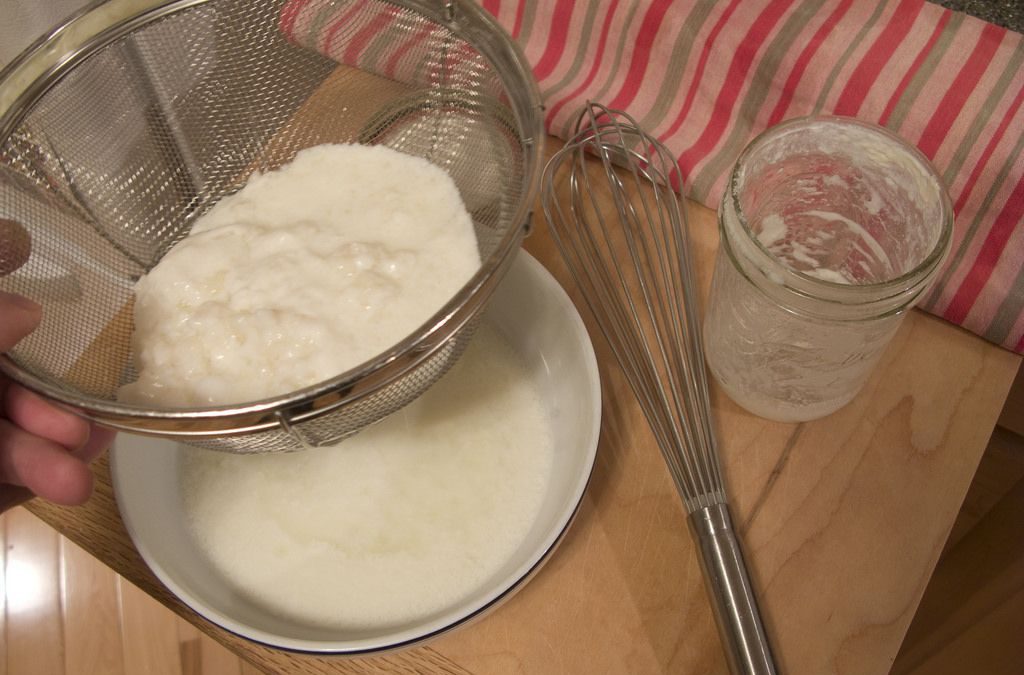
Kefir is a great way to get introduced to fermented beverages since it has a nice mellow flavor. It can be made with a different base such as cow, goat, sheep, or coconut milk, plain water, or coconut water. The milk versions are much like a slightly tangy drinkable yogurt and come in a variety of flavors. The water versions are sweet, fizzy beverages I like to call nature’s probiotic soda, and also come in a variety of fun flavors.
Kefir is made by combining kefir “grains” (colonies of bacteria and yeast) with any one of the liquids above (water requires the addition of sugar to feed the bacteria, but milks already contain sugars) and letting it ferment at room temperature for a few days. Once strained, the result is a creamy (milk) or a fizzy (water) slightly tangy beverage full of probiotics, enzymes, and B vitamins.
Milk based kefir is also a good source of protein, calcium, magnesium, and vitamin D. Kefir boosts immune system, improves digestion, decreases inflammation in the intestines, increases energy, fights allergies, kills candida, and more.
Kefir is also easy to make (recipe here) if you are committed to brewing a new batch every few days or the grains will deactivate, however kefir grains can be “rested” for longer periods should you need to take a break. If you get it at the store try to look for organic options free of added sugars and artificial ingredients. Lifeway Organic Kefir makes a great dairy kefir and Kevita makes the best coconut water kefir.
4. Fermented Dairy (Yogurt & Raw Cheese)
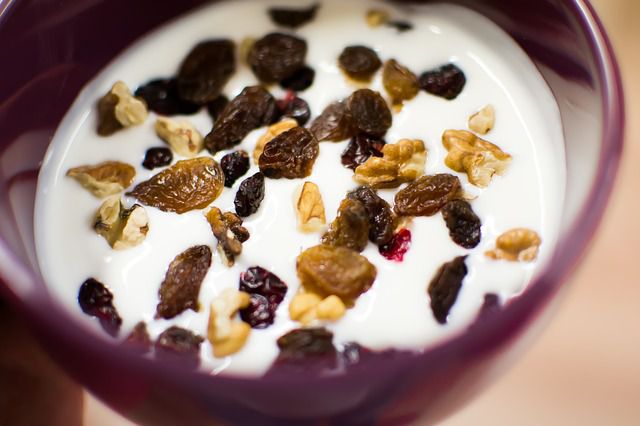
We’ve gone over kefir from dairy, but some other examples of fermented foods you might have in your refrigerator right this moment are yogurt and cheese. Yogurt is the most consumed fermented dairy product in America. We know the labels well – “contains live active cultures.” It’s a good source of protein, calcium, magnesium, vitamin D, and probiotics to support digestion and strengthen immunity.
Yogurt can easily be made at home using your choice of milk (preferably organic and raw) and a quality starter culture. When buying it, try and look for plain, full-fat versions with no sugars from organic grass-fed cows. Other good options are non-dairy from goat, sheep, and coconut milk.

Cheese. Who doesn’t love cheese? When it comes to cheese, most are pasteurized so try and look for raw, organic cheese from grass-fed cows, goat milk, and sheep milk which are high in probiotics and much easier to digest. Good options are Neighborly Farms of Vermont and Swissland Cheese Company.
5. Miso

Next time you eat sushi don’t miss out on the miso soup and pickled ginger. The base of miso soup is a paste made by fermenting soybeans, brown rice, or barley with a fungus (koji) and left to ferment for months. It contains some protein and vitamin K, aids digestion, boosts immune system, supports bones, nervous system, and healthy skin.
Miso paste can be found in the refrigerated section of natural foods markets and specialty Asian markets. Miso Master is my favorite. Try looking for organic or non-GMO since soybeans are one of the most common GMO crops. It’s delicious simply mixed with water as a soup, in addition to other ingredients in soups, stir fries, baked on fish, and in salad dressing. It does contain a lot of sodium, so a little can go a long way.
6. Tempeh
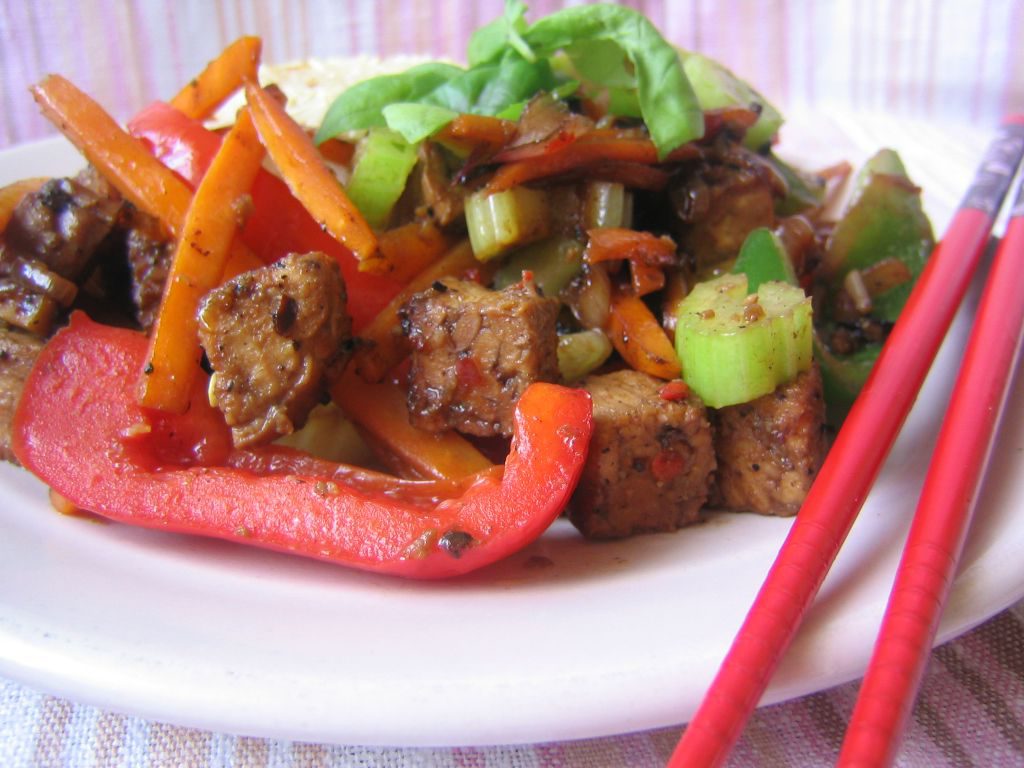
I discovered tempeh back in my vegetarian days. I was pleasantly surprised at how great it could taste when prepared well. In my experience plain tempeh is nothing to write home about but marinated and seasoned is a whole different story, and is yummy in stir fries, salads, and as a burger. Even though I’m no longer vegetarian, I still enjoy tempeh. It’s nutty flavor and chewy texture makes it a good replacement for meat in vegetarian and vegan recipes.
Tempeh is made with soybeans and a starter culture that bind together as it ferments to form a sort of bean cake containing all essential amino acids and making it a complete source of plant based protein. Like miso, fermented tempeh can be a great source of quality soy in your diet. It’s easy to digest, loaded with B vitamins, calcium, magnesium, potassium, and iron. Tempeh can increase bone density, reduce cholesterol, aid in muscle recovery, and reduce menopausal symptoms.
Tempeh is easily found in the refrigerated section of grocery stores, look for organic or non-GMO brands. Lightlife is the best. Soy in general contains natural estrogen, so it’s a good idea to eat it in moderation.
7. Kvass

Kvass is a lightly carbonated beverage traditionally made in Eastern Europe with rye bread and various veggies, or fruit, sugar, and yeast. More modern versions are made without the bread, just veggies or fruit, a bit of salt, bacteria, and yeast, resulting in a fizzy, tangy, and sometimes a bit salty beverage. All kvass contains probiotics but the health benefits vary depending on the produce used.
Specific benefits of beet kvass are described in the book Nourishing Traditions as:
“valuable for its medicinal qualities and as a digestive aid. Beets are loaded with nutrients. One glass morning and night is an excellent blood tonic, promotes regularity, aids digestion, alkalizes the blood, cleanses the liver and is a good treatment for kidney stones and other ailments.”
It seems the best option for kvass might be to make it at home since it’s a little hard to find outside of larger natural foods markets like Whole Foods Market.
8. Salsa
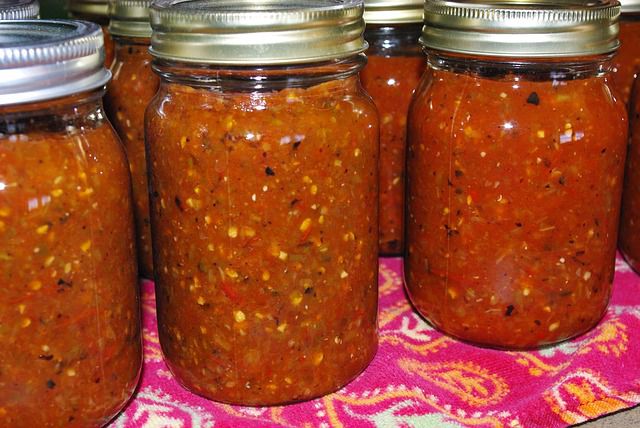
You might be thinking, but why should I ferment salsa? Since many people eat salsa anyway, why not give it a nutritional boost of probiotics by fermenting it? It’s much easier than canning methods, lasts for months instead of days in the refrigerator, and results in a more bright, tangy, and effervescent salsa. It’s one of the tastiest fermented foods to eat and a great way to use up those tomatoes, and other veggies and herbs in your garden!
Fermented salsa is easy to make at home using the same method as regular salsa, increasing the amount of sea salt or using a combination of sea salt and whey, and letting it sit at room temperature to ferment for usually 2 days when using whey or about 4 days when using only sea salt. Once you move your salsa to the fridge it will keep for a few months. Flavor will intensify the longer it’s in there. Wild Brine makes great fermented salsa.
9. Apple Cider Vinegar
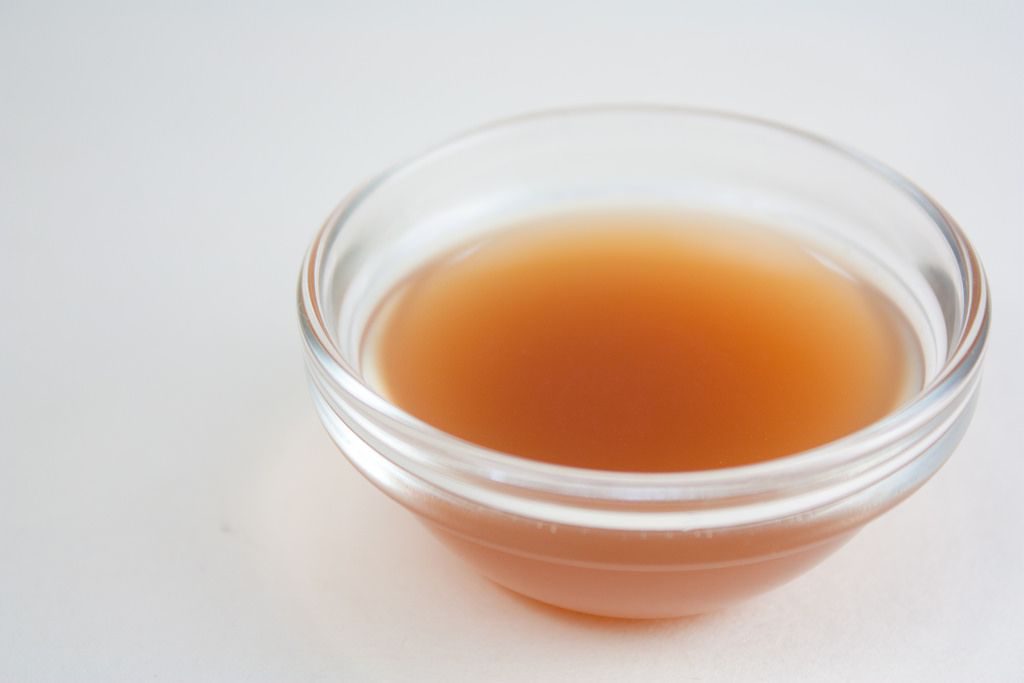
I could go on about the benefits of apple cider vinegar. They are numerous and there are a variety of ways to use it. Plus when it comes to vinegar, I actually enjoy the taste of this one. I like to add a teaspoon to a glass of water and drink it straight or add some raw honey, drizzle some on sauteed greens or steamed veggies when they are done cooking to add some zest, and use it in homemade salad dressings, and much more.
Apple cider vinegar is different from the average refined and distilled vinegar. Made from fresh apples that are crushed and allowed to ferment in their raw and unpasteurized state allows ACV to produce what is called the ‘mother’ which contains enzymes and minerals. This is the cloudy sediment at the bottom of ACV which is cleansing, increases energy, improves digestion, relieves heartburn and indigestion, and can be helpful for weight loss, and decrease appetite.
The most important things to look for with apple cider vinegar are raw, unpasteurized, and with the ‘mother’. Bragg has a long standing reputation as the best apple cider vinegar, which I have been using for years. ACV is usually found in most grocery stores and doesn’t require refrigeration after opening.
10. Tamari

Last but not least, tamari, a staple in our house is used a lot in Asian dishes and to add flavor to meat, poultry, and fish. Tamari is a low wheat or wheat free soy sauce that is a bit thicker, more smooth, and less salty. Tamari is the liquid that forms when making miso paste from fermented soybeans. Kind of like the cultured liquid whey that separates from yogurt or cheese.
Available in most grocery stores, try to look for organic or non-GMO, low-sodium, and gluten free (if you want to be sure it’s wheat free). San-J is a delicious tasting source.
As I mentioned earlier, sea salt has been working great for my ferments, but I plan on trying whey soon just to see if there’s a difference. Either way I am having a blast learning to ferment different foods! Next on the list…beet kvass! I’ll be sharing more recipes and how-to’s soon!
Looking forward to livening up those taste buds with this fermented foods list? Have you tried any of these or do you think you will? Any awesome recipes or favorite things to ferment? Share them below!
